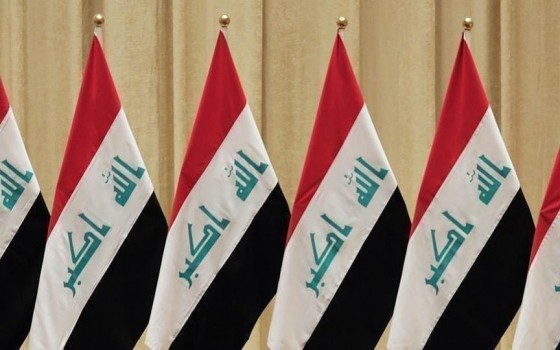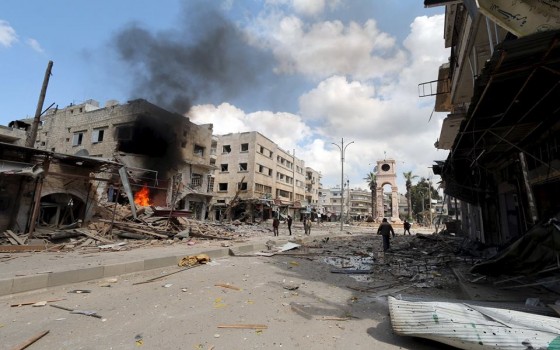
Israeli army instructed to cease fire to recover dual national Idan Alexander. UN report: More than 60 percent of Gaza's land has become unsuitable for agriculture.

- Europe and Arabs
- Monday , 12 May 2025 7:23 AM GMT
Gaza: Europe and the Arabs
Israeli Channel 12 reported that Israel received instructions to cease fire in Gaza starting at 12 noon to enable the recovery of soldier Idan Alexander, a dual citizen.
The channel added that the political echelon in Tel Aviv does not yet know the "specific date" for the release of the prisoner, who will be released under an exceptional deal between US President Donald Trump and Hamas, independent of Israel.
The i24NEWS website reported that mediators told Hamas, "Give Trump a gift, and he will give you a bigger gift," in an attempt to explain what happened.
It noted that there are significant Israeli concerns that the US-Hamas deal could pave the way for a larger project, especially since "Hamas is not naive" and knows how to turn corners. This has prompted a visit by Trump's envoy, Steve Witkoff, to the region. According to what was reported by the European news network Euronews in Brussels this Monday morning, Israel's Channel 15 reported that Witkov will arrive in Israel at 11:00 a.m. to meet with Prime Minister Benjamin Netanyahu and Minister of Strategic Affairs Ron Dermer, an hour before the ceasefire.
Haaretz reported that the army appreciates the release of Alexander from the northern Gaza Strip. Yedioth Ahronoth quoted an Israeli source as saying that Red Cross vehicles will enter the collection point and transport the prisoner Alexander to the buffer zone, where he will be handed over to the army. The prisoner will then meet his family and be transferred to Ichilov Hospital for an evaluation of his health.
Separately, a report by the Food and Agriculture Organization (FAO) in October 2024 showed that the war had damaged 67.6% of agricultural land (more than 10,000 hectares) by September 1, compared to 57.3% in May and 42.6% in February. 71.2% of orchards and fruit trees, and 67.1% of field crops, were damaged, especially in the Khan Yunis area.
Agriculture in the Gaza Strip occupies more than 40% of the land area and contributes between 20% and 30% of the food consumed daily.
However, the damage caused by the war has halted production in these areas, limiting the population's access to the basic foodstuffs needed for a healthy diet. Farmers' livelihoods have also been severely affected, posing significant challenges for future recovery.
On October 27, Israeli forces entered the Gaza Strip from several directions, starting from the north of the Strip and then expanding to the east, south, and center. This operation encompassed all of Gaza's agricultural lands, from Beit Hanoun in the north, through Rafah in the south, and reaching Khan Yunis and the Gaza refugee camps. A report issued by the Food and Agriculture Organization (FAO) in October 2024 showed that the war had damaged 67.6% of agricultural land (over 10,000 hectares) by September 1, compared to 57.3% in May and 42.6% in February. 71.2% of orchards and fruit trees, 67.1% of field crops (especially in the Khan Yunis area), and 58.5% of orchard crops were also damaged.
Systematic Destruction of the Agricultural Sector in Gaza: Huge Losses Threaten Food Security
Agricultural land in the Gaza Strip is witnessing unprecedented destruction due to the ongoing Israeli military operations, with more than 60% of agricultural land rendered unusable, according to reports from the United Nations Office for the Coordination of Humanitarian Affairs (OCHA). The Food and Agriculture Organization (FAO) reported that direct losses to the agricultural sector exceeded $300 million, while the Palestinian Ministry of Agriculture estimated that more than 18,000 dunams (a dunam is 1,000 square meters) were damaged, including fruit orchards, field crops, and vital infrastructure such as wells and irrigation networks.
The most prominent manifestations of destruction:
- 71.2% of orchards and fruit trees were damaged, including 75% of olive trees, a primary source of livelihood for many families, according to an FAO report in October 2024.
- 70% of poultry farms and greenhouses were destroyed, leading to a shortage in local production of vegetables, eggs, and meat.
- 52.2% of agricultural wells (1,188) were destroyed, especially in the Gaza and Khan Yunis governorates, exacerbating the water and crop irrigation crisis.
- 35% of farmers lost their sources of income due to the destruction of land or the prevention of access to it due to military restrictions.
Catastrophic Repercussions on Food Security
- Food prices have increased by 1,000% compared to pre-war levels, according to the World Food Programme, with fresh fruits and vegetables becoming scarce.
- 90% of the population now relies on food aid after local production ceased.
- Supply chains have been destroyed, including the bulldozing of agricultural roads and the bombing of storage warehouses, as happened in Beit Lahia, where 50 tons of seeds and fertilizer were destroyed.












No Comments Found